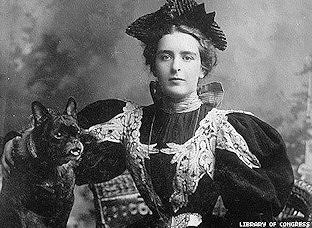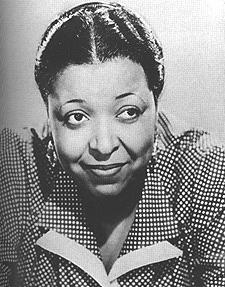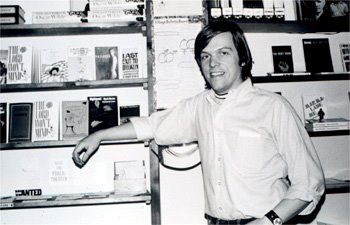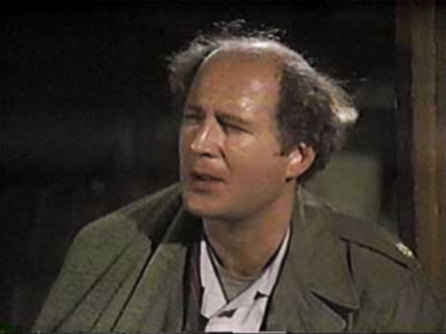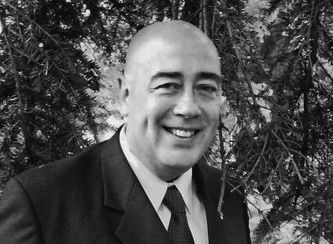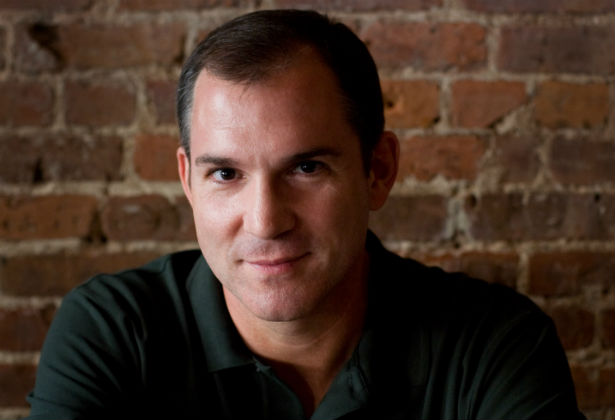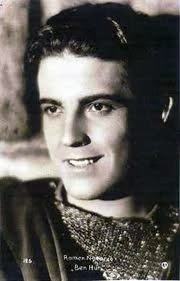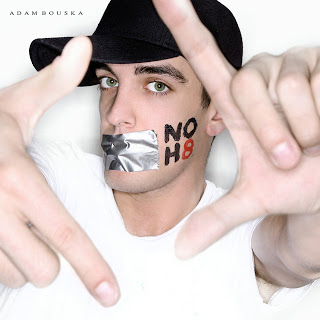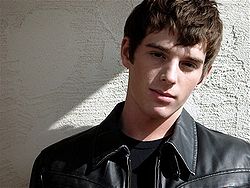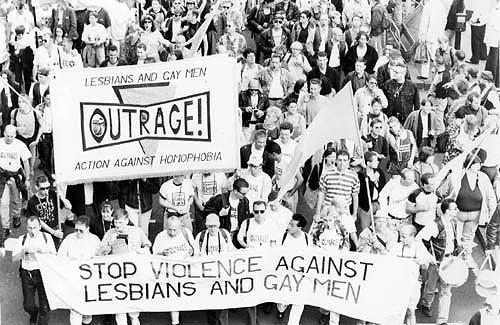|
presents THIS DAY IN GAY HISTORY based on: The White Crane Institute's 'Gay Wisdom', Gay Birthdays, Gay For Today, Famous GLBT, glbt-Gay Encylopedia, Today in Gay History, Wikipedia, and more …
Collected by Ted October 31 [{(o)}]|[{(o)}]|[{(o)}]|[{(o)}]| [{(o)}]|[{(o)}] Hall One Celtic male deity … is the horned god, "one of the most basic of the Celtic god types," whose worship goes back to the Stone Age. He is often associated with the Mothers, as well as with sex, animals, and nature. He also seems to have links with male shamans. His great antiquity is shown by a Stone Age painting in Ariege, France, which shows a man dancing in the hide of an animal and wearing the antlers of a stag. And in the eighteenth century, construction workers inside Notre Dame Cathedral in Paris uncovered a four-sided Celtic stone altar dating from Roman times and bearing the figure of a bearded male deity with antlers. The stone was inscribed with the word Cernunnos, which means "The Horned One." The horned god was especially linked with male sexuality and often appears with an erect cock. Moreover, when erect, he is sometimes portrayed in the company of men, not women. A drawing of the horned god from Val Camonica, Italy, shows him holding a ceremonial collar ring in one hand and a horned serpent in the other. He is being worshipped by a man, and the man has an erection. This picture is reminiscent of early art scattered throughout Europe. The men often have erections and appear together in groups without women. In view of the Celts' notoriety for homosexuality, these facts suggest a Gay element in the worship of the horned god. The horned god was also lord of the dead and the underworld. To the Celts, who believed in reincarnation, darkness and death were parts of the cycle of life and rebirth, and death was the very place where the creative forces of nature brought about new life. Because of this connection with the underworld the horned god was often shown as black in color. But this blackness was not considered evil, as Christianity later viewed it. The Celts dated the feast days of their religion according to the changing of the seasons, the breeding habits of animals, and the sowing and harvesting of crops. As it happens, these dates correspond exactly with the holidays later attributed by medieval Christians to witches. The Christians called these days, respectively, Halloween, Candlemas, Walpurgisnacht, and Lammas. Ritual transvestism associated with the old holidays continue[s] in Europe down to modern times. "May Day sports perpetuated the practices, including even transvestism. in Wales, there existed, into the nineteenth century, a peasant dance and march with a garland, led by a dancer [a horned god figure] called the "Cadi." In the Hogmanay celebration in Scotland, "the boys wore skirts and bonnets, the girls, hats and greatcoats." The feast of Fools, a remnant of the old pagan religion, has persisted into modern times with clerics "wearing masks and monstrous visages at the hours of the office. They dance in the choir dressed as women, or disreputable men, or minstrels. They sing wanton songs." Today many Gay people throughout Europe and America observe Halloween as a Gay holiday with transvestite celebrations.
1876 – On this date the American poet Natalie Barney was born (d.1972). In addition to being the muse and inspiration of other writers, American expatriate Natalie Barney, known as the Amazon, was a poet, memoirist and epigrammatist in her own right. Barney was born in Dayton, Ohio, on October 31, 1876; she grew up in Cincinnati and Washington, D.C. Her father, Albert Clifford Barney, inherited a railroad fortune, and when the family lived in Washington, Natalie moved in the highest social and diplomatic circles. The rigid protocol of high society bored her, however, and she was eager to pursue her own adventures in an atmosphere more conducive to sexual, and especially lesbian, expression. Barney later said she knew by age twelve she was Lesbian and was determined to "live openly, without hiding anything." As a child, she had visited Europe many times, and when she was twenty-four she settled permanently in Paris. Famous for her operatic love affairs—most notably with the poet Renée Vivien and the painter Romaine Brooks—and her philosophical commitment to flirtation and nonmonogamy, for over 60 years, Barney was the doyenne of Parisian Lesbians. René de Gourmont, the French writer and literary critic, struck up a close friendship with Natalie Barney after reading her Eparpillements (Scatterings, 1930). He published two collections of the letters he had written her. Lettres à l'amazone (1914), and Lettres intimes à l'amazone (1926), thus she became known in French literary circles as "the Amazon." Barney was not merely the muse of other writers, but a poet, memoirist, and epigrammatist in her own right. Her first collection of poetry, Quelques portraits-sonnets de femmes, celebrating many of her lovers, was published in 1900. Although her poetry and plays are mostly works of juvenilia or old-fashioned exercises in nineteenth-century French verse style, her memoirs and portraits such as Aventures de l'espirit (Adventures of the Mind, 1929), and Souvenirs Indiscrets (Indiscreet Memoirs, 1960) are vivid, perceptive pieces that describe many of the gays and lesbians who frequented the literary salon she held in Paris for fifty years: Colette, André Gide, Lucie Delarue Mardrus, Gertrude Stein, Djuna Barnes, Romaine Brooks, Oscar Wilde, Marcel Proust. Her lifelong relationship with Romaine Brooks began in Paris in 1915. They were both American, rich and grand Lesbians and despite (or perhaps because) of the fact that they never lived together, their commitment to one another lasted for more than 50 years. It's probably easier to name the women who weren't their lovers, than it would be to catalogue their conquests. Barney comments on the gay lifestyles of the period, producing a spirited defense of homosexuality with the same unabashed openness and enthusiasm with which she lived her life. It is, however, the epigrams—Eparpillements, Pensées d'une amazone (Thoughts of an Amazon, 1920) and Nouvelles pensées d'une amazone (More Thoughts of an Amazon, 1939)—that show a real literary merit and a rare talent for beautifully turned, perfectly aimed verbal barbs and ironic comment. Natalie Barney died on April 24, 1972, at the age of ninety-five in the same house at 20 rue Jacob where she had lived and run her salon for more than fifty years. It was not, however, until 1992 with the publication of A Perilous Advantage and Adventures of the Mind that her work became available to English-speaking readers.
1896 – Ethel Waters (d.1977) is perhaps best remembered for her fat "mammy" roles in plays and films such as Member of the Wedding (1950, 1952) and television shows such as Beulah (1950), in the title role of which she replaced the redoubtable Hattie McDaniel. However, Waters had a long, varied, and colorful career. She began as "Sweet Mama Stringbean," a slender and glamorous blues singer, whose talent made her one of the major stars of the Harlem nightclubs of the 1920s. Her ability to infuse dramatic meaning and intensity into her music made her a natural in musical theater as well, and for a time in the 1930s she was the highest paid performer on Broadway, winning rave reviews for her roles in such plays as Blackbirds (1930) and Mamba's Daughters (1938). She earned an Academy Award nomination for her supporting performance in the film Pinky (1949) and a New York Drama Critics' Circle Award as Best Actress of 1950 for the maid in Member of the Wedding, a role she reprised on film to further acclaim two years later. In her autobiography, His Eye Is on the Sparrow (1950), she described her rough upbringing: "I never was a child . . . I just ran wild as a little girl. I was bad, always a leader of the street gang in stealing and general hell-raising. By the time I was seven I knew all about sex and life in the raw. I could out-curse any stevedore and took a sadistic pleasure in shocking people." As a teenager, while working as a chambermaid in a Philadelphia hotel, Waters gathered her courage one Halloween and sang for the first time on a nightclub stage—behind a mask. Heartened by her success, she began to sing professionally in Philadelphia and Baltimore. Then she moved to New York to join the dynamic explosion of African-American creativity that was the Harlem Renaissance. The Harlem Renaissance also celebrated sexuality with a remarkable lack of judgmentalism. Like most blues singers of the time, Waters sang her share of raunchy, openly suggestive songs such as "Organ Grinder Blues" and "Do What You Did Last Night." And, like many other women blues singers of the day, such as Bessie Smith, Ma Rainey, and Alberta Hunter, she was known to have sexual relationships with other women. Although she was not as open as Rainey about her same-sex relationships, Waters had at least one quite public affair with a dancer named Ethel Williams, with whom she flirted from the stage and had notorious lovers' spats. She is also rumored to have had a brief liaison with British novelist Radclyffe Hall, whom she mentions in her autobiography. In the late 1920s and early 1930s, Waters appeared in several Broadway revues, then gradually garnered non-singing dramatic roles on both stage and screen. During her later years, Waters considerably toned down her "red hot mama" image and redefined herself as an evangelical Christian. Her last performances were as a member of Billy Graham's crusade. She died on September 1, 1977.
1940 – Craig L. Rodwell (d.1993) was an American gay rights activist known for founding the Oscar Wilde Memorial Bookshop on November 24, 1967, the first U.S. bookstore devoted to gay and lesbian authors, and as the prime mover for the creation of the New York City pride demonstration. Rodwell is considered by some to be the leading gay rights activist in the early homophile movement of the 1960s. Rodwell was born in Chicago, IL. His parents divorced prior to his first birthday and for the next few years he was boarded out for day care where he was required to do kitchen labor and laundry to supplement his board and care. When he was 6 years old, Rodwell's mother, Marion Kastman, fearing that the child care set up could cause her to lose custody of her son, arranged for his admission to the Christian Scientist affiliated Chicago Junior School for "problem" boys, in Elgin, IL. Conditions and treatment at the school were described as "Dickensian" and Rodwell got a reputation for being a rebellious child, as well as a "sissy," during his seven years there. It was at Chicago Junior School that Rodwell first experienced same-sex relationships and also came to internalize the Christian Scientist notion that "truth is power and that truth is the greatest good." At Sullivan High School in Chicago, IL. Rodwell continued his studies in Christian Science by enrolling in Sunday school at the 16th Church of Christ, Scientist. He later studied ballet in Boston before finally moving to New York City in 1958. It was in New York that he first volunteered for a gay rights organization, The Mattachine Society of New York. In 1962, Rodwell had an affair with Harvey Milk, who went on later to become one of the first openly gay politicians elected to high office. It was Rodwell's first serious relationship. Rodwell's relationship with Milk ended in part due to Milk's conflicted reaction to Rodwell's early activism and his introduction to Milk of "strange new ideas that tied homosexuality to politics, ideas that both repelled and attracted the thirty-two-year-old Milk." Milk believed that Rodwell had been responsible for Milk contracting an STD. After Rodwell's arrest and incarceration when picked up cruising in Washington Square Park, Milk ended their romantic involvement. Shortly after, Rodwell attempted suicide. When Rodwell opened the Oscar Wilde Memorial Bookshop in 1967, Milk dropped by frequently, and after moving to San Francisco Milk expressed his intention to Rodwell of opening a similar store "as a way of getting involved in community work." Milk eventually opened a camera store that also functioned as a community center, much like Rodwell's bookshop had as a community gathering place. In November 1969, Rodwell proposed the first gay pride parade to be held in New York City along with his partner Fred Sargeant, Ellen Broidy and Linda Rhodes. The first march was organized from Rodwell's apartment on Bleecker Street. We propose that a demonstration be held annually on the last Saturday in June in New York City to commemorate the 1969 spontaneous demonstrations on Christopher Street and this demonstration be called CHRISTOPHER STREET LIBERATION DAY. No dress or age regulations shall be made for this demonstration. We also propose that we contact Homophile organizations throughout the country and suggest that they hold parallel demonstrations on that day. We propose a nationwide show of support. Rodwell is believed to have created the term heterosexism in January 1971 when he wrote:
"After a few years of this kind of 'liberated' existence such people become oblivious and completely unseeing of straight predjudice and - to coin a phrase - the 'hetero-sexism' surrounding them virtually 24 hours a day. In 1978 Rodwell was one of the creators and organizers of Gay People in Christian Science. One reason for the creation of the group was that three of its members had been recently excommunicated from the local branch church. In 1980 the group began to demonstrate by leafletting at the church's Annual Meeting in Boston and by 1999, six years after Rodwell's death, the Christian Scientist church no longer barred openly gay or lesbian people from membership. Rodwell died on June 18, 1993 of stomach cancer.
1942 – David Ogden Stiers is an American actor, director, vocal actor, and musician, noted for his roles in Disney films, the television series M*A*S*H as Major Charles Emerson Winchester III and the science fiction drama The Dead Zone as Reverend Gene Purdy. He is also known for the role of District Attorney Michael Reston in the Perry Mason TV movies. Ogden Stiers joined the cast of "M*A*S*H" in 1977 as the arrogant but charming aristocrat Charles Emerson Winchester III. In addition to starring in the sitcom, he voiced the characters of a number of Disney movies, including Cogsworth in "Beauty and the Beast" and the Archdeacon in "The Hunchback of Notre Dame." Stiers is also the associate conductor for the Newport Symphony Orchestra and the Ernest Bloch Music Festival. He has guest conducted over 70 orchestras around the world, including the Oregon Mozart Players, the Vancouver Symphony, the Oregon Chamber Players, the Yaquina (Ore.) Chamber Orchestra, as well as orchestras in San Francisco, San Diego, Los Angeles, Chicago and Toronto. In 2009, Stiers announced to the world that he is gay and "very proud to be so." The actor said he kept his homosexuality under wraps for years because he feared coming out would hurt his career. Butas he has not experienced any anti-gay discrimination in the movie industry recently, Ogden Stiers is reconsidering what exactly made him stay in the closet for so long.
1955 – The "Boys of Boise" affair begins. Starting with the arrest of four men for sexual relations with male teenagers who are prostitutes, it is blown into a situation in which Boise is called a mecca where Gay men can find boys. Begun by a group of right-wing politicians to shake the moderate political establishment, the issue is inflamed by the Idaho Daily Statesman and Time magazine. As a result of the hysteria, a city councilman is defeated for reelection and a West Point cadet from Idaho is dismissed. A 1965 investigation reveals the incident to be based on outright lies.
1956 – Bruce Bawer, born in New York City, is an American writer who has been a resident of Norway since 1999. He is a literary, film, and cultural critic and poet who has also written about gay rights, Christianity, and Islam. Bawer's writings on literature, gay issues, and Islam have all been highly controversial. While championing such authors such as William Keepers Maxwell, Flannery O'Connor, and Guy Davenport, he has criticized such authors as Norman Mailer and E.L. Doctorow. A member of the New Formalists, a group of poets who promoted the use of traditional forms, he has assailed such poets as Allen Ginsberg for what he views as their lack of polish and technique. Bawer was one of the first gay activists to seriously propose same-sex marriage, notably in his 1993 book A Place at the Table, and his 2006 book While Europe Slept was one of the first to skeptically examine the rise of Islam in the Western world. On an episode of the Charlie Rose Show marking the 25th anniversary of the Stonewall Riots, Bawer took part in a discussion with fellow gay moderate Andrew Sullivan and gay-left writers Tony Kushner and Donna Minkowitz. Minkowitz underlined the conflict between the two sides of the gay-rights movement by saying: "We don't want a place at the table! We want to turn the table over! A Washington Post article about the 25th anniversary of Stonewall quoted Bawer on gay pride marches: "It's hard to make straight people understand how serious an issue gay rights is when they look and see a kind of Mardi Gras atmosphere … It doesn't communicate the idea that these are serious issues." From 1994 to 1999, he was a regular columnist for The Advocate, the gay newsmagazine. His Advocate columns and other articles by Bawer on gay issues were later collected in an e-book, The Marrying Kind.
1964 – Frank Bruni is an American journalist and long-time writer for The New York Times. In June 2011, he was named an op-ed columnist for the newspaper. His columns appear twice weekly and he also writes a weekly newsletter. One of his many previous posts for the newspaper was as its chief restaurant critic, from 2004 to 2009. He is the author of three bestselling books: Born Round, a memoir about his family's love of food and his own struggles with overeating, Where You Go Is Not Who You'll Be, about the college admissions mania, and Ambling Into History, about George W. Bush. He is currently a CNN contributor. After graduating from Columbia University in the City of New York, Bruni joined the staff of the New York Post and then moved on to the Detroit Free Press, where he did a wide range of beats, including a stint covering the Persian Gulf War. He spent more than a year as the movie critic and also wrote extensively about LGBT issues and AIDS. In 1992, he was a runner-up for the Pulitzer Prize in feature writing for his profile of a convicted child molester. In 1995, Bruni took a job with The New York Times as a metropolitan reporter and often wrote for The Times's Sunday magazine and for Sunday Arts & Leisure. In 1998, he was assigned to the Washington, D.C., bureau, where he covered Capitol Hill and Congress, before being sent on the campaign trail to follow then-Texas Governor George W. Bush. He then covered the White House for the first eight months of the Bush administration and served as the Washington-based staff writer for the Sunday magazine. In July 2002, he was promoted to Rome bureau chief. Two years later, he became The Times' restaurant critic. After more than five years in that position, he returned briefly to the magazine before becoming an op-ed columnist. In 2016, the National Lesbian and Gay Journalists Association gave him its Randy Shilts Award for his career-long contribution to LGBT Americans. He was previously awarded the GLAAD Media Award for Outstanding Newspaper Columnist in 2012 and 2013. Bruni was born in White Plains, New York. He is openly gay. He has struggled with his eating and bulimia
1968 – Silent film star Ramon Novarro was found murdered. A bathroom mirror had the words "US GIRLS ARE BETTER THAN FAGGITS" smeared in blood. Hustler Paul Ferguson and his brother Tom Ferguson were convicted of the murder and both received life sentences. During the trial, Novarro's sexual orientation was called into question with more vigor than the guilt or innocence of the defendants.
1969 – On this date Time magazine ran a cover story on "The Homosexual in America" that included a report on the Stonewall Riots. It was protested by the Gay Liberation Front because the writer said homosexuals are mentally ill and immoral.
1969 – On this night sixty members of the Gay Liberation Front (GLF) and the Society for Individual Rights (SIR) staged a protest at San Francisco's Examiner in response to another in a series of news articles disparaging LGBT people in San Francisco's Gay bars and clubs. The peaceful protest against the "homophobic editorial policies" of the Examiner turned tumultuous and were later called "Bloody Friday of the Purple Hand". Examiner employees "dumped a bag of printers' ink from the third story window of the newspaper building onto the crowd." Some reports were that it was a barrel of ink poured from the roof of the building. The protestors "used the ink to scrawl "Gay Power" and other slogans on the building walls" and stamp purple hand prints "throughout downtown San Francisco" resulting in "one of the most visible demonstrations of Gay power". According to Larry Little John, then president of SIR, "At that point, the tactical squad arrived — not to get the employees who dumped the ink, but to arrest the demonstrators who were the victims. The police could have surrounded the Examiner building...but, no, they went after the Gays...Somebody could have been hurt if that ink had gotten into their eyes, but the police came racing in with their clubs swinging, knocking people to the ground. It was unbelievable." The accounts of police brutality include women being thrown to the ground and protesters' teeth being knocked out.
1980 – A California appellate court upholds the conviction of a man for masturbating in the presence of an undercover police officer in a public restroom over the contention that, since the officer did not appear to be offended, he should be acquitted.
1983 – Adam Bouska, born in Decatur, Illinois, is an award winning American fashion photographer who runs a photography studio based out of West Hollywood, California. He is known for pictures of male models in particular, and is considered a rising 'superstar photographer' in the gay community. His work has been printed in DNA Magazine and reFRESH and has already been featured on a variety of shows and mediums including The New York Times, Life & Style magazine, Guinness Book of World Records 2010, Chelsea Lately, TODAY show, The View, Million Dollar Listing, Millionaire Matchmaker, and CNBC. He is also noted for his work with celebrities such as Barry Manilow. Bouska is openly gay. He lives in West Hollywood, California and was recognized as the community's leading photographer at the West Hollywood awards in January 2007. In November 2008, in response to the narrow approval in California of Proposition 8, which banned gay marriage, Bouska and his partner, Jeff Parshley, founded the NOH8 Campaign to promote the overturn of this ban. While beginning at a grassroots level, by April 2009 the campaign had seen support from many celebrities and became involved in the Miss USA 2009 controversy. The campaign has now gained the support of many notables. NOH8 is a photographic silent protest launched on February 1, 2009 in direct response to the passage of Proposition 8 in California. Photos feature subjects against a white background with duct tape over their mouths, symbolizing their voices being silenced by Prop 8 and similar legislation around the world, with NOH8 painted on one cheek in protest. Three years since its inception, the NOH8 Campaign (pronounced No Hate) has grown to over 20,000 faces and continues to grow at an exponential rate. The campaign began with portraits of everyday Californians from all walks of life and soon rose to include politicians, military personnel, newlyweds, law enforcement, artists, celebrities, and many more. Perhaps two of the most famous NOH8 models have been Cindy McCain, wife of U.S. Senator John McCain (Arizona), and daughter Meghan McCain.
1986 – Sean Paul Lockhart, born in Lewiston, Idaho, is an American model, film actor and gay pornographic actor. For the latter, he uses his stage name Brent Corrigan and has played roles in gay porn films notably with Cobra Video and Pink Bird Media, but has also made some films with Active Duty and Jet Set Men. As for his appearances with Falcon Studios particularly in The Velvet Mafia series, he has used the stage name Fox Rider instead. 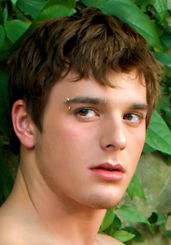 As Brent Corrigan/Fox Rider (Click for Full Monty) He has also appeared in several nonpornographic films as well, using his birth name Sean Paul Lockhart trying to reposition himself as a more serious mainstream actor rather than just a porn star and has released no new pornographic films since 2010 . He has focused almost exclusively on gay-themed movies and indie films. Such gay-themed and indie films include Judas Kiss, Sister Mary, Another Gay Sequel: Gays Gone Wild!, Welcome to New York, and others. In 2011 he starred as "Ricky" in the musical Chillerama directed by Tim Sullivan in the segment "I Was A Teenage Werebear". In 2011 Sean Paul Lockhart won the Rising Star Award at the Philadelphia QFest Festival. In 2012, he announced his involvement in production of an indie film titled Truth to be directed by Rob Moretti. He has also recorded an album with songs by the Swedish singer-songwriter and accordionist Roland Cedermark. Lockhart heads up his own production company and enjoys writing in his spare time. Both Lockhart and Cobra Video the gay porn company that launched him as a young porn star have created separate "official Brent Corrigan websites" promoting the performer's gay porn films creating some confusion and controversy. Lockhart's admission of playing pornographic roles while underage created great controversy resulting in voluntary withdrawal of many of his early films from circulation. He also appeared as a witness in the murder trial of Bryan Kocis, owner of Cobra Video for whom Lockhart worked. Prosecutors alleged the two accused suspects murdered Kocis because they wanted to get Lockhart to work for them at their porn film company. However, police investigating the murder believe Lockhart didn't know about the plot and that he fully cooperated with the police and testified for the prosecution.
1987 – On this date the Associated Press reported that several nursing homes in King County (Seattle) Washington were under investigation for refusing to accept AIDS patients or those suspected of being likely to have been exposed to HIV.
1992 – On this date the coalition for Lesbian and Gay Rights held a march in London. The event was a follow-up to EuroPride 1992. One marcher recalls: I was particularly gratified on my journey down to watch some Metropolitan Police officers turning a blind eye to a group of gay men "kicking shit" out of a group of youths who had chanted "Batty Boys" at them in Brixton.
[{(o)}]|[{(o)}]|[{(o)}]|[{(o)}]| [{(o)}]|[{(o)}]
|
|
